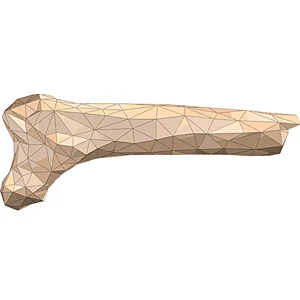A Northwestern Engineering research team has created bone implants that trigger their own replacement with real bone.
Bone implantation is often performed by replacing the missing bone with bone harvested from elsewhere in the body. This often has complications, including pain, as a result. In other cases, metallic implants are used. The process of bone implantation is particularly problematic in children as the implant does not grow with its recipient and thus multiple surgical procedures are required until adulthood.
Current limitations in the development of osteoregenerative biomaterials include inability to regenerate new bone, high costs and lack of surgical ease of handling. These are addressed in a study published in Science Translational Medicine by Jakus, Department of Materials Science and Engineering, Northwestern University, Evanston, Illinois, USA, and colleagues.
The researchers have created custom bone implants using a promising highly versatile biomaterial which can be rapidly 3D-printed (up to 275 cm3/hour) from room temperature extruded liquid inks into a variety of shapes. The new synthetic osteogenerative viomaterial, hyperplastic “bone” (HB), is composed of 90% hydroxyapatite by weight percent (wt) and only 10 wt % polycaprolactone or poly(lactic-co-glycolic acid).
The team of researchers evaluated the resulting HB in vivo in a mouse subcutaneous implant model for material biocompatibility, in a rat posterolateral spinal fusion model for new bone formation, and in a non-human primate calvarial defect case study. The results demonstrated that HB did not elicit a negative immune response, became integrated with surrounding tissues and rapidly ossified and supported cell viability and proliferation without the need of osteo-inducing substances.
One of the advantages of HB is that the product can be customised to the patient after scanning the patient’s body. HB can also be trimmed and cut to size and shape during the procedure. What sets it apart from many of the material currently available for bone repair is its ease of use in surgery, its effectiveness and, most importantly, its ability to grow with its recipient.
Source : Science
Translational Medicine
References:
Jakus AE, Rutz AL, Jordan SW, Kannan A, Mitchell SM, Yun C, Koube KD, Yoo SC, Whiteley HE, Richter CP, Galiano RD, Hsu WK, Stock SR, Hsu EL, Shah RN (2016) Hyperelastic "bone": A highly versatile, growth factor-free, osteoregenerative, scalable, and surgically friendly biomaterial. Sci Transl Med; DOI: 10.1126/scitranslmed.aaf7704






